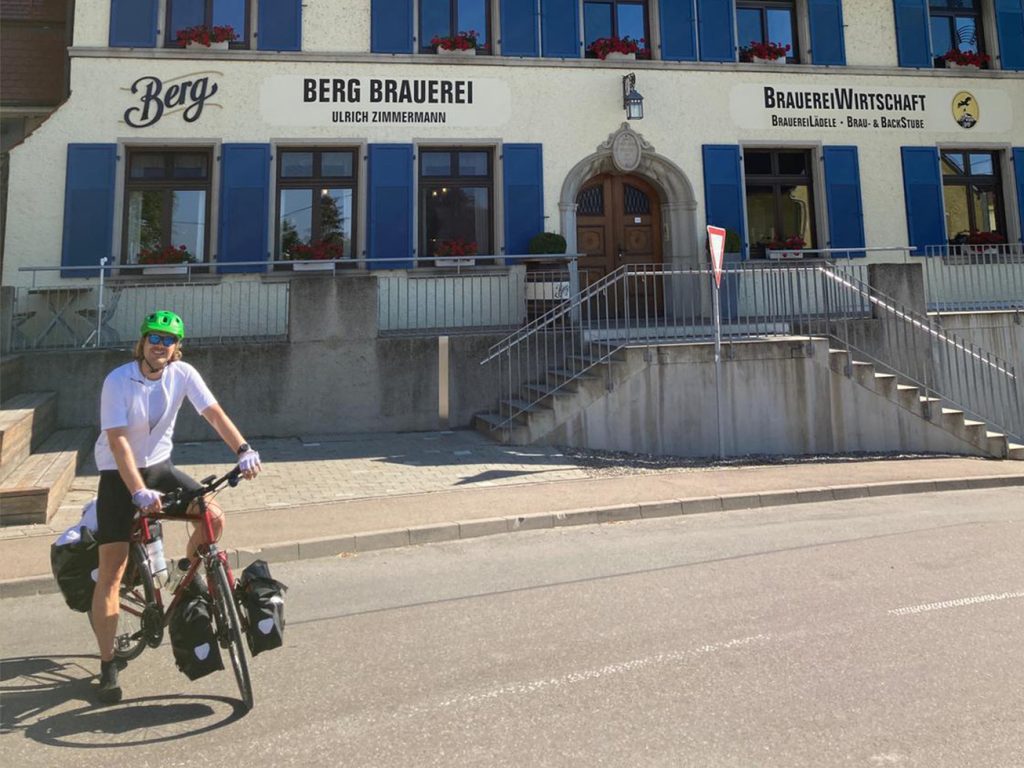
“Not the pace but your personal focus directs your life.” This is the travel guiding credo of Sandy Steven Weckemann, nickname Sandweck. For him, who was born in Stuttgart, Germany, it is not interesting to see as many things possible but to undergo a inner journey, too. Nowadays it is easy to travel anywhere. But what remains from the trip?
Since many years, Sandy is a passionate cyclist. On a whim, he rides short and long tracks without training plan. 2020, he was well trained because he was cycling a lot and coincidentally ready for a multiple-day tour. He decided spontaneously to ride his trekking bike from his doorstep in Stuttgart to Lake Como and from there to the Italian coast. The route can be driven by car in around nine hours. But for Sandy the travel experience was more essential because for him cycling is the best way to cross the Alps.
At the end of August, his friend Norman and he started on the seven-days cycling journey. After four days, Norman left and the last three days Sandy cycled solo. Like the training, the daily routes were not strictly planned. Sometimes it was 50 km, sometimes 140 km distance in a day. Sometimes three hours or eight hours of cycling time. Far away from performance and time pressure, the two cyclists listened to their bodies and felt what was good for them. Sandy was so kind to answer me a view questions about his Slow Travel journey.

Why do you like bicycle travels?
In the course of the years, I noticed that travels by bicycle inspire me the most. I travel with less baggage and still have everything with me what I need. With my trekking bike I can start directly from my home to new adventures. I like this way of travel because it’s slowing-down and makes it possible to stop instantly anytime anywhere. You are directly in contact with the people and you can flexibly camp with a tent.
Riding bicycle gives me strength in daily life. During multiple-day tours, I really notice how good I feel even while bodily performing high. I need the balance and it provides me with energy and time to reflect. I also travel a lot with my modified van. Thereby, I noticed a big difference regarding the baggage that I take with me on the travels. The minimalism of the bicycle journeys allows a much better connection to the surrounding. Without a metal box around myself, I am much closer to the people that I meet along the trip. I enjoy every single talk with the people. This also slows me down and grounds me.
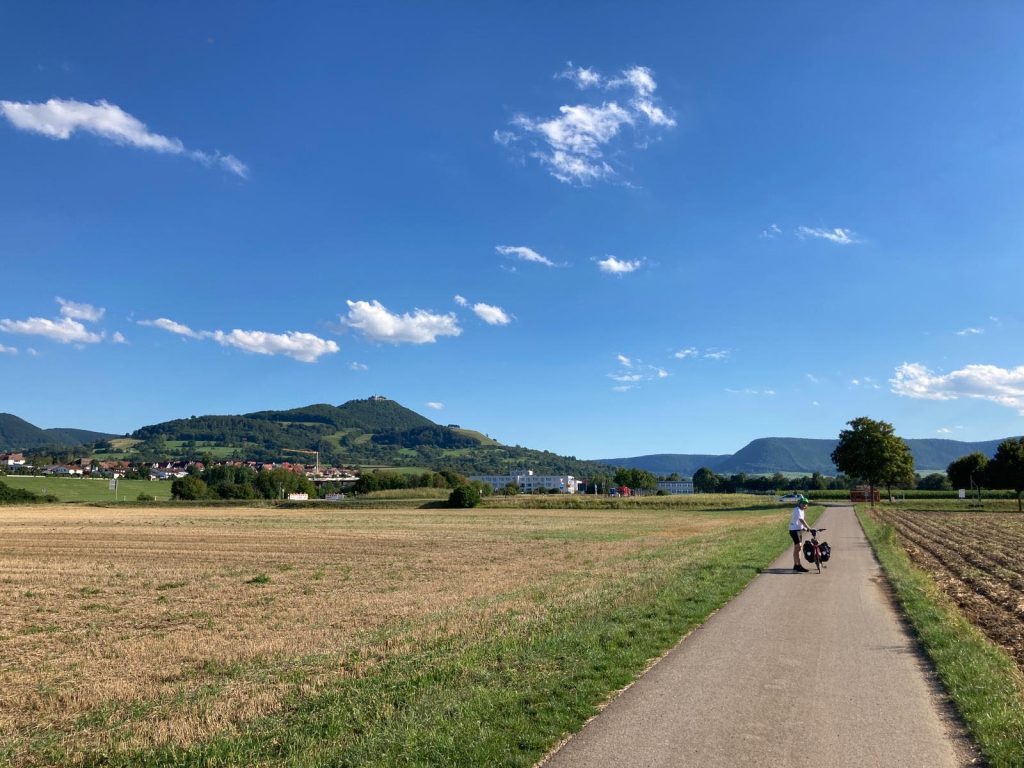
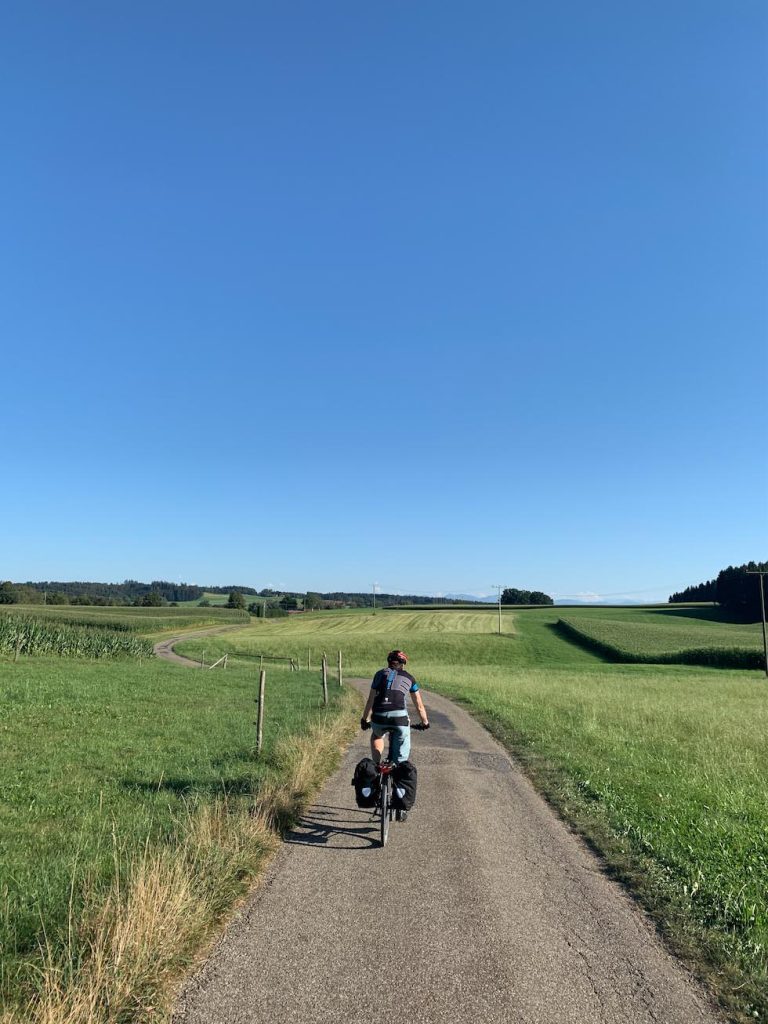
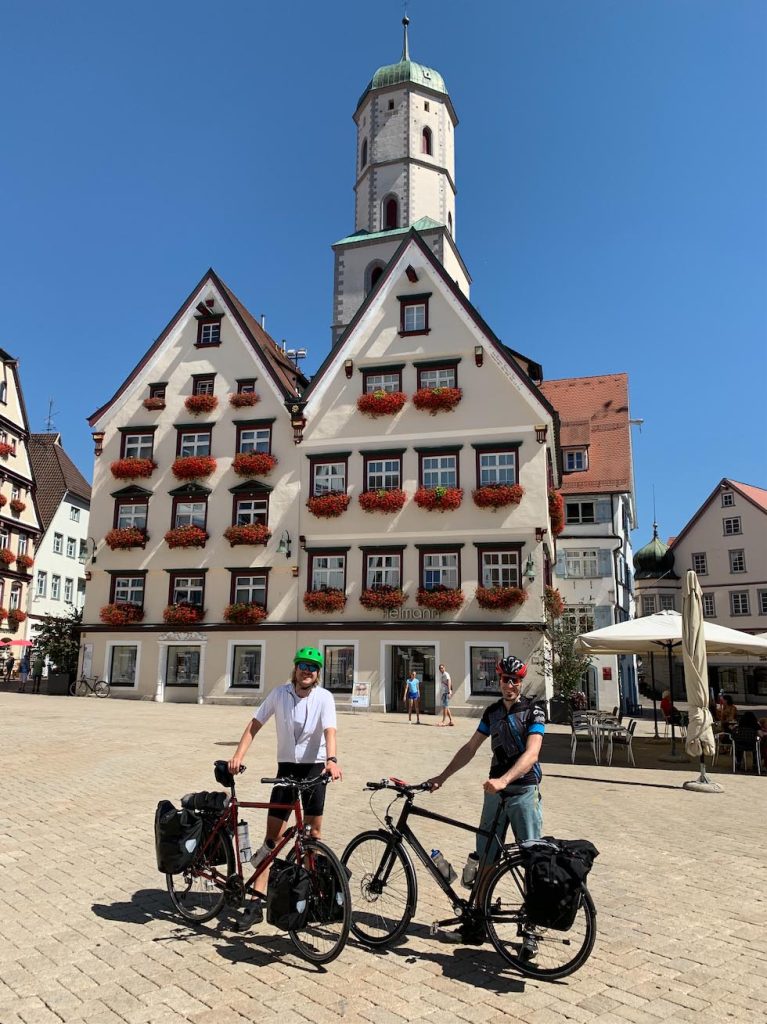
How did you plan your travel?
I planned the trip with the bicycle app Komoot. Usually, in the morning, I turn my smartphone on and choose the tour for the day. The rest of the day, I am leaving the phone in flight-mode and just use it for taking pictures, navigation and documentation of the travel. In the evening, in the tent I then often get in touch with my friends and family. In this way, I got the whole day for myself and am not distracted. On my first transalpine travel by bike, I brought ten hiking maps along and invested a lot of time to be sure to be on the right way. Now I can focus on the essential things and got time to enjoy nature.
Additionally, I chose the best travel time in Europe. In the Summer or in September the chances are good to cross the Alps safely. Although, I already had 30 cm of fresh snow during a mountain bike transalpine trip in September 2007. I did not prepare for the different regions because I know all the countries pretty good. I also skip sight-seeing during those travels. I just stop when something crosses my path that I like but I don’t do extra detours. I rather concentrate on the route and enjoy the highlights along the way to the South. I planned my trip with the bicycle app Komoot.


Where did you sleep during the trip?
The year before, I chose a quite similar route to stay over at friends’ and with Couchsurfing. But because of the pandemic I bought a one-person tent and an inflatable camping mattress. This brought total flexibility to my travel. I used to camp wild a lot. But during this travel, I drove from campground to campground. One time I could stay with a friend in the mountains. The campgrounds were very cheap – from 5.00 to 18.00 Euro. To me it was important to sleep somewhere save and not to be woken up by a hunter in the middle of the night. Also, hygiene and fresh clothes got more important to me. This is why I would choose this way of travel again, although, I am finding Couchsurfing and Warm Showers really good to get in contact with people from the region and to get secret tips.
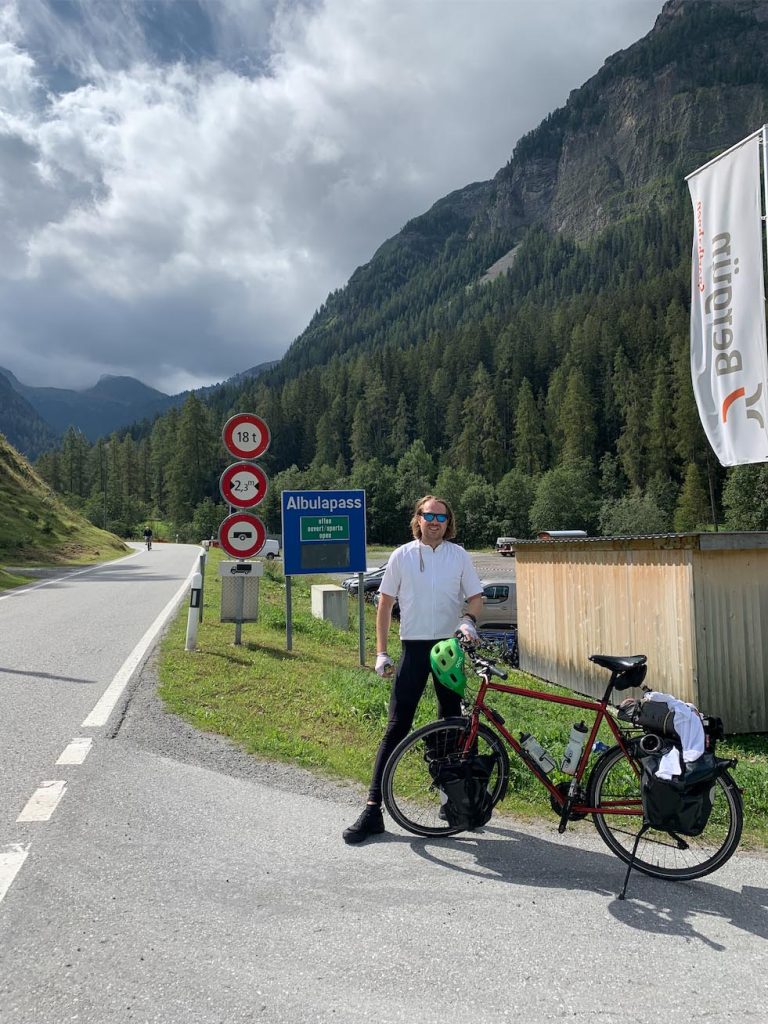
Could you describe the travel across the Alps briefly?
Since I started directly from my own door step, I can play it like a mental movie. It went over the Swabian Alps to the Allgäu and then into the high mountains of Switzerland. The language changed, the temperature and the scent as well. To me, the way down to Italy was especially beautiful. It got warmer and warmer and nature changed. Generally, the plants and animals were very beautiful along the whole route. The way also leads along remains of old glaciers where it gets a bit cooler. Suddenly, then the Mediterranean air appears and it gets warmer.
Actually, I cycled the whole day. Just in Isny, Norman and I made a break for one day because of a bad weather forecast. Additionally, we had a holiday apartment there and could sleep in the dry and warmth. The last three bicycle days I took the train directly to the sea because again, there was a three-day bad weather forecast. I try to stay flexible during my bicycle trips to easily adjust to the circumstances. During the travel, I just spend money on food and accommodation. When possible, I bought regional and seasonal food.
My personal highlight of the trip was the beautiful drive up to the Albula Pass. Large vehicles are banned from the street. Additionally, the weather was wonderful to climb the Swiss mountains. After I rested a view day on the sea side, the drive back also happened by bicycle by the way. In this way, my carbon footprint was pretty low.


How did you experience the Swiss and Italian culture?
Like already said, it is way easier to get in contact with people on a bike than in a car. Also, I value to not present a license plate or another country-specific identifying feature. On a bicycle every person is the same and you meet a lot of people who drive in the same direction. It’s a mix of the different cultures. You enjoy the common moment and talk a bit along the way. I always learn a lot from my travel companions.
Also, because of the weight and space, I did not bring my gas cooker along the trip and went out for meals every day, of possible in family-owned restaurants. Like this I came in contact with a lot of locals. As well, I had the hope to sleep at farms but I didn’t manage to find farm stays. Just at the first evening, we could stay spontaneously at a garage of a kind man who we met in a restaurant and had asked if he knew someone with a garden to stay in our tent.

What did you bring home from your travel?
I brought the lightness back home with me. It felt good to always travel in one direction and enjoy the day. It is so good to just live into the day without any to-do lists. I rarely buy souvenirs because to me they are just dust collectors. But is is always nice to relax and to become one with the bicycle. A transalpine travel brings me to my own inner person and I feel the full happiness.
What do you think of Slow Travel?
As a Slow Traveler, I got more time for the small things that happen along the way, to notice them and to perceive them. My goal is to travel at least once a year as solo Slow Traveler and to enjoy time alone.
However, I don’t know if Slow Travel is a travel type for everyone. I think everybody has to find his own way of travel. For me it’s a mixture of Van Life and bicycle tours. But I don’t want to convince or persuade anyone. Slow Travel is more sustainable but it should also be fun.
You can follow Sandy’s travels on his travel blog and his Instagram.
Interview by Anika Neugart.
If you enjoyed this article, you might also like …

09 October 2020
A Time Out. By bike from Germany to South Korea
In the year 2016, Korean architect Nam Dongho decided to go on an adventure. He had worked in Amsterdam, Netherlands, for a while and was now stuck in an unfulfilling position in an architecture firm in Munich, Germany. Since a longer time …